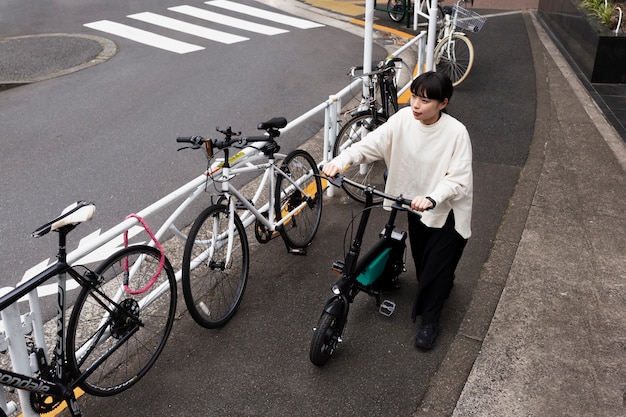Cycling Cities: How Urban Areas are Embracing Bike-Friendly Infrastructure
In recent years, there has been a notable shift towards creating more bike-friendly urban environments, with cities around the world implementing innovative infrastructure and policies to promote cycling as a sustainable and efficient mode of transportation.


In recent years, there has been a notable shift towards creating more bike-friendly urban environments, with cities around the world implementing innovative infrastructure and policies to promote cycling as a sustainable and efficient mode of transportation. From dedicated bike lanes and bike-sharing programs to bike-friendly regulations and initiatives, urban areas are embracing cycling as a key component of sustainable urban mobility. In this article, we'll explore the evolution of cycling cities and the various ways in which urban areas are becoming more bike-friendly.
1. Dedicated Bike Lanes and Infrastructure
One of the most visible signs of a bike-friendly city is the presence of dedicated bike lanes and cycling infrastructure. Cities are investing in the construction of protected bike lanes, bike paths, and cycle tracks, separate from vehicular traffic, to provide safe and convenient routes for cyclists. These dedicated lanes not only improve safety for cyclists but also encourage more people to bike for transportation, recreation, and exercise.
2. Bike-Sharing Programs
Bike-sharing programs have become increasingly popular in urban areas, providing residents and visitors with access to bicycles for short-term use. These programs typically involve docking stations located throughout the city where users can rent bikes on a per-ride or subscription basis. Bike-sharing programs promote cycling as a convenient and cost-effective transportation option, reducing reliance on cars and alleviating traffic congestion and pollution.
3. Bicycle-Friendly Regulations and Policies
Cities are implementing bicycle-friendly regulations and policies to prioritize the safety and well-being of cyclists on the road. This includes measures such as lowering speed limits in residential areas, implementing traffic calming measures, and enacting laws that protect cyclists' rights and promote their visibility and safety. By creating a supportive legal and regulatory framework for cycling, cities can encourage more people to choose bikes as their preferred mode of transportation.
4. Education and Awareness Campaigns
Education and awareness campaigns play a crucial role in promoting cycling as a safe and viable transportation option. Cities are launching initiatives to educate residents about the benefits of cycling, safe riding practices, and rules of the road. These campaigns aim to dispel common myths and misconceptions about cycling, address safety concerns, and encourage more people to incorporate biking into their daily routines.
5. Integration with Public Transit
Bike-friendly cities are also integrating cycling with public transit systems to create seamless multimodal transportation networks. This includes providing bike racks on buses and trains, installing bike parking facilities at transit stations, and offering incentives for combined bike and transit trips. By making it easier for cyclists to access public transportation and vice versa, cities can encourage more people to use bikes for first and last-mile connections, reducing reliance on cars and improving overall mobility.
6. Community Engagement and Advocacy
Community engagement and advocacy are essential components of creating bike-friendly cities. Local cycling organizations, advocacy groups, and grassroots initiatives play a crucial role in advocating for cycling infrastructure and policies, raising awareness about the benefits of cycling, and mobilizing support for bike-friendly initiatives. By engaging with residents, businesses, and policymakers, these groups can drive positive change and foster a culture of cycling in urban areas.
Conclusion
Cycling cities are on the rise, with urban areas around the world embracing cycling as a sustainable, healthy, and efficient mode of transportation. By investing in dedicated bike lanes, bike-sharing programs, bicycle-friendly regulations, education campaigns, and community engagement, cities can create environments that prioritize the safety and well-being of cyclists and promote cycling as a viable alternative to car-centric transportation. As more cities embrace biking as a key component of urban mobility, we can look forward to healthier, happier, and more sustainable cities for all.